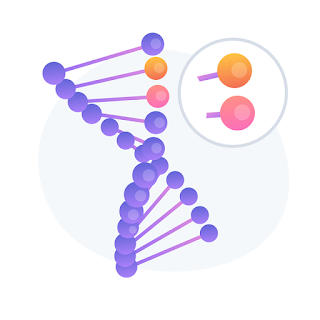Exome And Genome Sequencing || BioAro
Genomics sequencing plainly refers to the determination of a microorganism's DNA at a point of time. It is a valuable tool for scientific research as it is instrumental in ascertaining the numerous fatal infections to public health. In today's modern world, genomic sequencing is increasingly being used to decipher the genetic material of an organism or even a virus.
After proper research is carried out, selected information is imparted to the general public through specific databases. This emphasizes on the virus, its origin and associated biological and bibliographic information. This process is extremely useful in the medical field, where the disease is expected to spread or increase in the near future. Genome sequencing goes by a wide range of names such as full genome sequencing, complete genome sequencing, or entire genome sequencing.
The process mainly involves deciphering the nucleotide sequence to determine the full genetic code of the microorganism by visualizing its exome and genome sequencing. The sequenced genome is then analyzed against a reference genome for that species. Thus, making it an essential tool, added to the toolkit of public health experts and used for taking precautions and necessary action in the event of any infectious disease outbreaks. Genome sequencing is a comprehensive method of analysis which is used to track and decipher entire genomes.
Stanford Medicine Scientists used an ultra-rapid genome sequencing approach to identify rare genetic diseases. This process received great acclaim for the short time in which it was attempted and completed at eight hours. genome sequencing facility is a fast and affordable way to obtain high-level information about the bacteria using one single test. Scientists are attempting to study the entire genome sequence in order to understand how the genome as a whole works, how genes work together to direct the growth, development and maintenance of an entire organism. This process has received success in its research attempts and put to wide use in various research facilities.
Over the past twenty years, exponential advancements in DNA-sequencing technologies have greatly decreased the time, efforts and cost required to sequence an entire human genome. Currently, less than $1,000 is charged for a genome, making it feasible to have all of our genomes sequenced as part of an advised routine health care check-up in the near future, as has recently been put forward by Genomics England, in the UK. This is a big step in the medical field and is expected to have a huge impact on public health research and analysis in the future.
The intricate process of genome and exome sequencing can be broadly classified into four stages- initially preparing the clones of the organism's genome, DNA sequences collection of clones, generation contig assembly and development of an acceptable database. This can be used to assess the possibility of detrimental alterations in the genomes of an organism. Previously this process took a year for completion but now, it can be performed in a matter of hours with expert precision, considering that the particular alteration is present in the genome being assessed.
Get more information
Please visit us :- https://bioaro.com/
follow on us
Facebook :- https://www.facebook.com/BioAroinc/
Twitter :- https://twitter.com/bioaroinc
LinkedIn :- https://www.linkedin.com/company/bioaroinc




Comments
Post a Comment